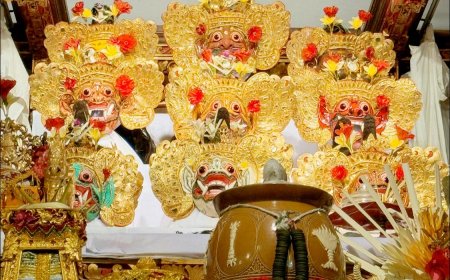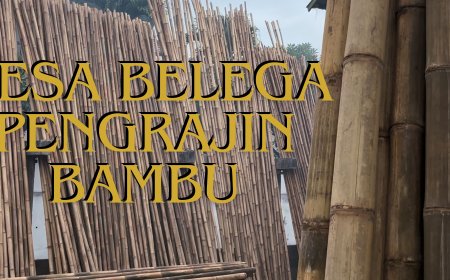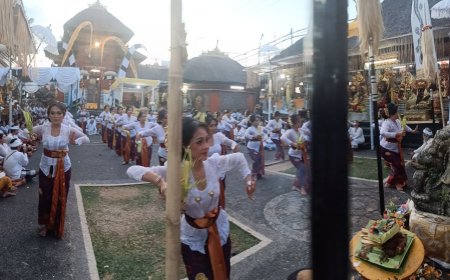The Apex of the Sacred Ceremony: Ngenteg Linggih and Its Spiritual Dimensions
On October 5, 2024, coinciding with the Kuningan Day celebration, the people of Mengwitani village held the significant Ngenteg Linggih ceremony at Pura Desa Puseh, marking a rare and meaningful cultural event that reinforces their heritage and identity. This ceremony, a symbol of hope and revival, resonates with the community’s love for their homeland amidst modern challenges. The rituals began at dawn and culminated with the Ngenteg Linggih ceremony around 9 AM, guided by three spiritual leaders, emphasizing the connection between the spiritual and physical realms. Key aspects included the purification of nature and the harmonization of elemental forces to achieve spiritual purity, culminating in the essential Mapeselang ceremony, which represents creation and the blessings of prosperity. Additional processes, Mapapasaran and Mapedanan, follow as expressions of gratitude and blessings for the community.
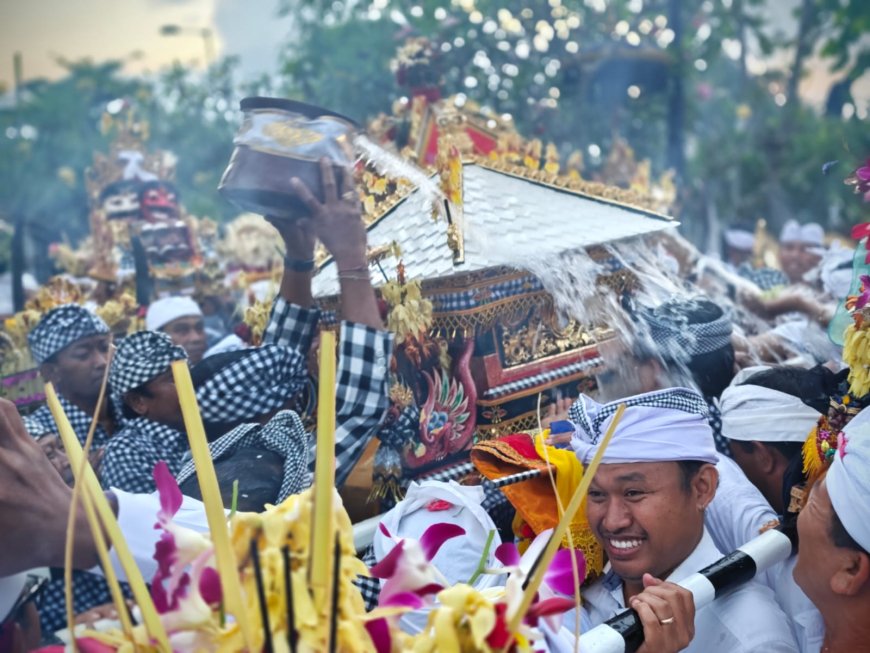
On October 5, 2024, coinciding with the Kuningan Festival, the Krama of Mengwitani Traditional Village celebrated the peak of the Karya Agung Ngenteg Linggih at Pura Desa Puseh, a rare and meaningful event. In an atmosphere filled with reverence and grandeur, the people of Mengwitani united to celebrate their invaluable cultural heritage while reaffirming the identity and traditions passed down from their ancestors. This Karya Agung symbolizes hope and revival, stirring a love for the motherland that becomes increasingly precious amid the challenges of modern times.
This moment serves as a window to the past, where the current generation appears unaware of when Ngenteg Linggih was last held, or perhaps it has never been conducted at this temple before. Based on field information, around 1978, the ceremony held in this village was Ngusaba Desa/Ngusaba Nini, not Ngenteg Linggih.
The series of Ngenteg Linggih ceremonies at Pura Desa Puseh Mengwitani began at 5:00 AM, starting with the procession of Ida Bhatara lunga Beji purification. This procession lasted approximately 2.5 hours until Ida Bhatara returned to the seat. The event continued with ngias Ida Bhatara, followed by the offerings of pendet pesalin, and the procession of Ida Bhatara murwa daksina, which involved circling the temple nine times. Among these processes, the Tegak Gede ritual also took place. Once all these processes were completed, the main event, Ngenteg Linggih, commenced.
The Ngenteg Linggih ceremony began around 9 AM, led by three Sulinggih: Ida Pedanda Gede Ngurah Putra Keniten from Griya Kediri Sangeh, Ida Pedanda Gede Jelantik Puta Cawu Manuaba from Griya Gede Manuaba Cawu Blayu, and Ida Pedanda Gede Jelantik Giri Santa Citta from Griya Tegal Jadi.
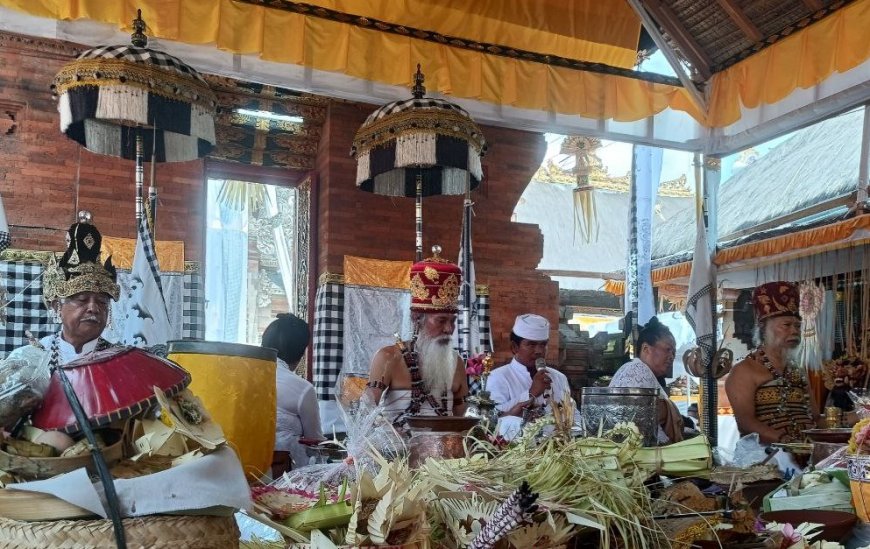
The Sulinggih who led the Ngenteg Linggih ceremony
Ngenteg Linggih is a yadnya ceremony aimed at making the earth a dwelling place for Ida Sanghyang Widhi. This concept represents the transition from the Niskala (the unseen) to the Sekala (the seen), bringing the intangible God into the tangible, manifesting the abstract into the concrete. We invite the presence of Ida Sanghyang Widhi to reside in the realm of Sekala (Earth). In a smaller context, this realm is often referred to as a pura, kahyangan, or other sacred places. Thus, the meaning of Ngenteg Linggih is to reaffirm Ida Sanghyang Widhi in His manifestation as Ista Dewata, allowing Him to reside once again in the pura where we conduct the ceremony.
To establish Ida Sanghyang Widhi on Earth, both the Sekala and Niskala must be in unity. Therefore, as part of the Ngenteg Linggih series, the ceremony of Mapadudusan Agung is held, which is a purification ceremony for the Sekala (earth) to achieve the unity of the universe, unifying both the Sekala and Niskala. Only in a state of purity can humans draw closer to the source of that purity, which is Ida Sanghyang Widhi.
To realize the purity of the earth, the initial step that must be taken is to bring all elements of the Panca Maha Bhuta, namely pertiwi (earth), apah (water), teja (fire), bayu (wind), and akasa (ether), into a state of balance. All negative energies are neutralized. Therefore, the Bhuta Yadnya Tawur Balik Sumpah ceremony is held. Through this Tawur Balik Sumpah ceremony, all contents of the universe (sarwa prani) are honored, resulting in balance or harmony on earth. This balance or harmony is the primary condition for achieving purity on earth. The Tawur ceremony was previously conducted on October 2, 2024, coinciding with the Tilem sasih Katiga.
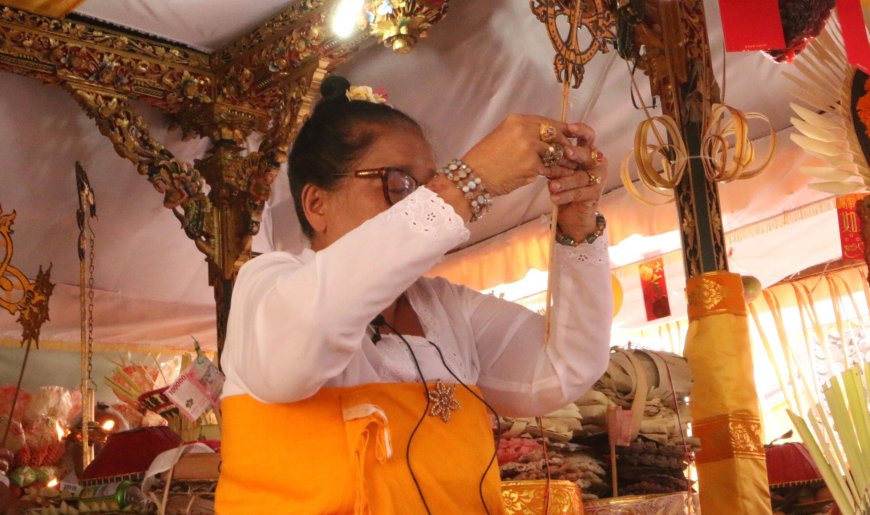
Ida Pedanda Istri Parwati Kemenuh performed the Senjata Nawa Sanga procession

Ida Pedanda Putra Pasuruan recited the Tuturan dialogue of mapejejiwan.
The peak of the Ngenteg Linggih procession is the Mapeselang ceremony. This ceremony has a very high essence and is considered the core of the entire procession, believed to be the determinant of the ceremony's success. In Mapeselang, Ida Bhatara descends from His seat to the Sanggar Paselang. In this sanggar, Ida Bhatara appears as Sanghyang Semara Jaya and Semara Ratih. Philosophically, this is understood as a process of creation, where He gives life and sustenance for prosperity in the world. The meaning of creation is implied in the dialogue of Mapajejiwan recited by Ida Pedanda Putra Pasuruan as Yajamana Karya from Griya Gede Taman Lukluk and Tapeni, Ida Pedanda Istri Parwati Kemenuh from Griya Gede Keramas Kemenuh. Complementing the Mapajejiwan, there is the Ngindang procession led by Ida Pedanda Istri Made Oka Pasuruan from Griya Oka Pasuruan. Ngindang is clearly implied in the Mapajejiwan script and symbolically interpreted as the cycle of the world and the formation of all its elements.
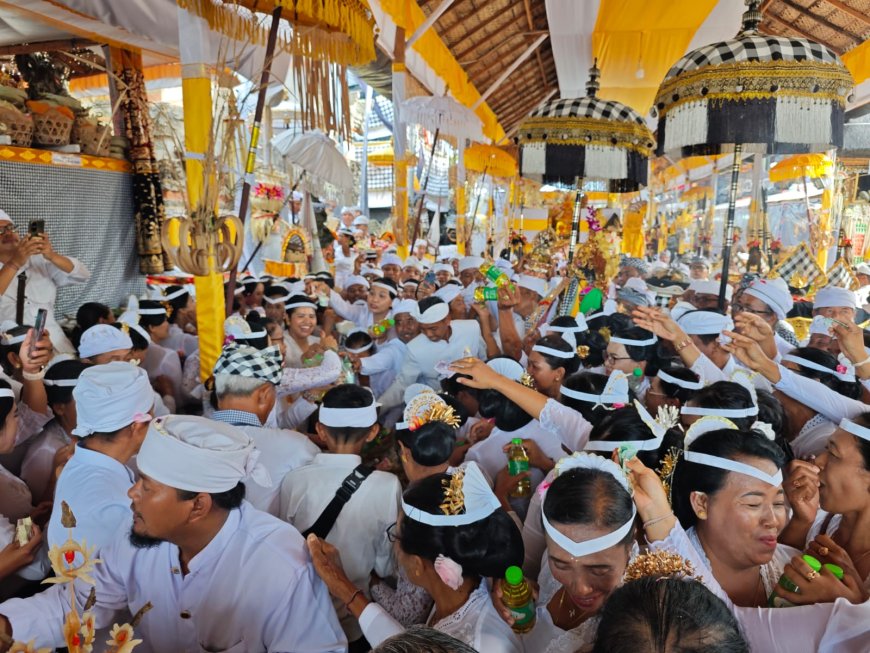
Mapapasaran Process
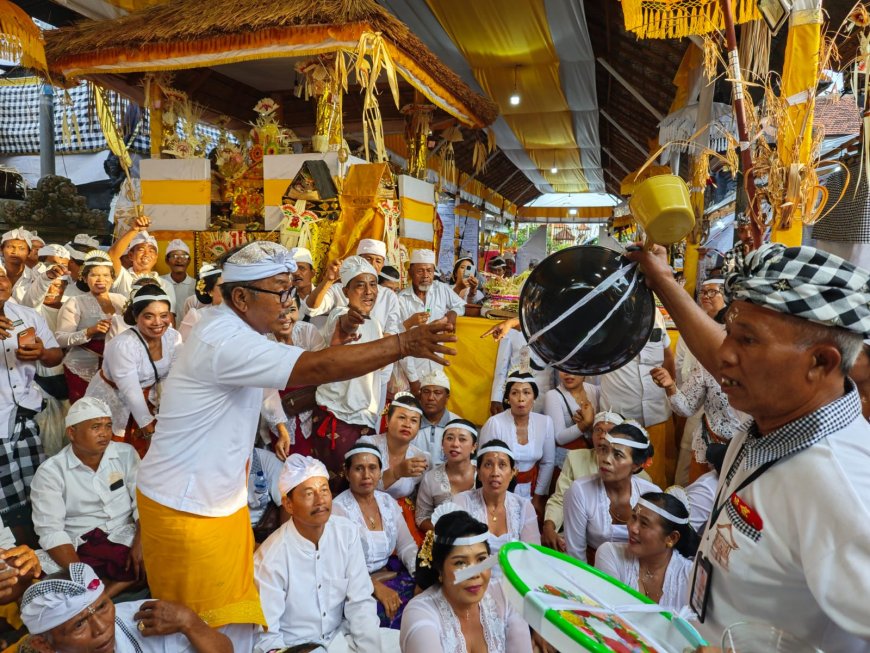
Mapedanan Process
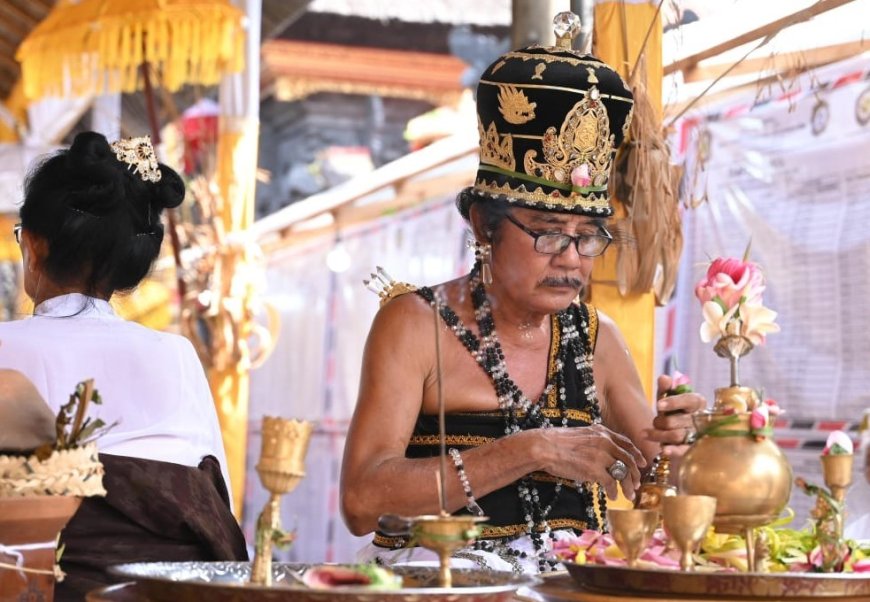
Ida Pedanda Gede Ketut Putra Timbul led Mapapasan Ceremony

Ida Peranda Gede Isana Manuaba led Mapadanan Ceremony
Mapeselang can be regarded as the conclusion of the Ngenteg Linggih procession. However, within the Karya Agung, there are two additional processes: Mapapasaran and Mapedanan. In other places, these two processes are also often conducted after the Tawur ceremony, not after Ngenteg Linggih. Mapapasaran is interpreted as the sale of tools or means for the preparation of Yadnya offerings, while Mapedanan symbolizes Ida Bhatara blessing humanity, which includes the process of giving (charity) to people in the form of funds or goods. The Mapapasaran procession is led by Ida Pedanda Gede Ketut Putra Timbul from Griya Kawi Purna Timbul, while the Mapadanan procession is led by Ida Peranda Gede Isana Manuaba from Griya Lebah Manuaba Kedampal.



















































